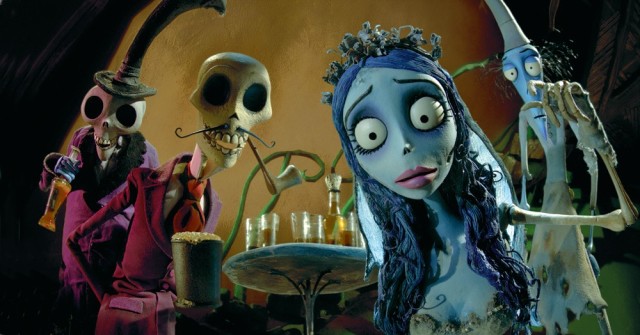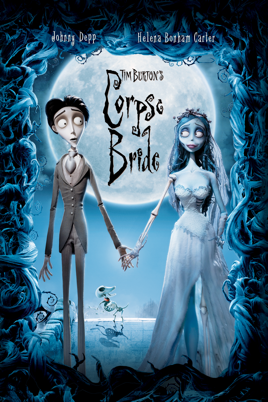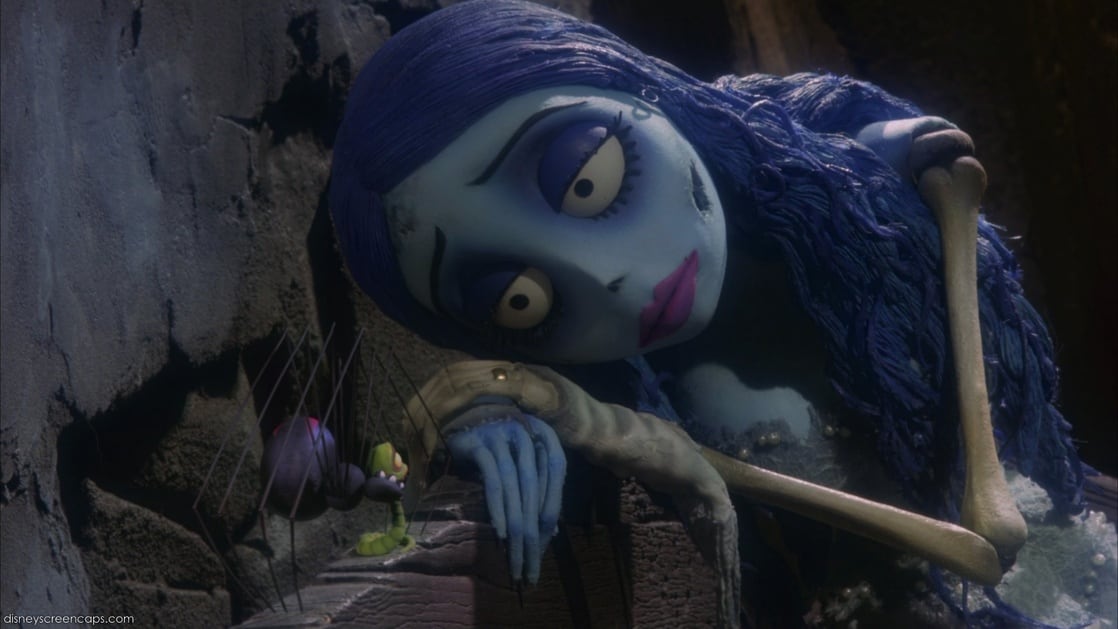Corpse Bride is a British-American stop-motion-animated fantasy film directed by Mike Johnson and Tim Burton in 2015. The main characters are John August, Caroline Thompson and Pamela Petter. This movie is a hybrid film that included various types of genres such as romance, action, drama, comedy, horror, fantasy, musical. German expressionism has been used by Time Burton as his visual aesthetic when he produced this film.
German expressionism is a Filmic style that arose in Germany from 1919 to 1926. It also a cultural movement that is challenging to define as it is not distinguished by a singular style or method of creation while German expressionism is generally considered to be a pre-World War II movement. In the 1920s, the expressionists start to bring in the shooting styles of Hollywood films to strive with them. There are many themes in this theory and it can be found in this film such as revolt, self-analysis, madness and primitive, sexual savagery. The most apparent in this film is the set design and chiaroscuro lighting. Chiaroscuro lighting is the low-key lighting and contains high contrast visuals. Some of the areas will be very dark while some are very bright. Moreover, this film also comprises surrealism and some of the settings in this film were very gothic and dark.
The movie begins in an unspecified Victorian British village in Victorian England. Victor Van Dort, son of a nouveau riche fish merchants, and Victoria Everglot, the neglected daughter of snobbish aristocrats are preparing for their arranged marriage by their parents. When they first met each other, they have a good impression and fall in love with each other. Victor was too nervous in his first rehearsal of the wedding ceremony and so the ceremony failed to continue. He ran off and keep practicing his wedding vows alone in the forest. Just as he put on his wedding rings onto a branch, suddenly a corpse bride, Emily appears and she took Victor to the hell. Victor tries to escape from the land of the living but failed. Due to Victor's inexplicable disappearance, Victoria was forced by her parents to marry her relative named Barkis Britten. But then Victoria realized that the real purpose of Barkis married to her is because of money and Victoria leave him directly. Victor agrees to marry Emily and willingly to drink the poison- Wines of Ages in their wedding ceremony. Emily stopped him. She noticed Victoria's appearance and she just realized Victor did not belong to her. In the end, she reunites Victor and Victoria and turned into hundreds of butterflies.
As I mentioned above, this film had included different themes. The first theme is a revolt. One of the main characters in this movie, Victoria has obeyed their parent's wishes marry Victor because it was the traditional law at that time. Because of Victor's disappearance and he has screwed up their first rehearsal of the wedding ceremony, Victoria's parents find another wedding partner for Victoria, which is their relative, Barkis Britten. Victoria refused it as she already fell in love with Victor. She was being chained by her parents. Hence, she tries to escape and she climbed out of the window even though she knew that was not allowed. She does not care what her parents said yet just know Victor needed help so she ran off.
Secondly, some self-analysis can be found in this movie. At the beginning of the movie, Victor was very anxious and lack of confidence during his first rehearsal of the wedding ceremony with Victoria. He then ran off to the forest for self-practice. When he was wandering at the forest in order to remember his wedding vows, he noticed that his spouse was still at the church. He keeps thinking whether he really wants to go back or not and he was not sure about his own feelings. This is how it got him into trouble in the next moment. After being forced by Emily to marry her, finally, Victor knew that the person he loves is Victoria. Furthermore, Emily does apply to self-analysis. Victor lies to Emily that he wants to bring her to meet his parents but actually he went back to find Victoria. Emily felt very sad after knowing Victor's deception. She sings a song and thinks whether she forced Victor to marry her is the right thing or not.

In addition, the following theme is madness. After watching the movie, I feel that the hell was chaotic although it looks lively and beautiful. When Victor first enters hell, imagine how he feels and how does he begin in a totally different situation. He feels lost and anxious where we could see from his facial expressions. He wants to escape from there imperatively. He does not know what happened in this new environment.

The last theme is primitive and sexual savagery. In hell, we can see some of the corpses are drinking wine, using utensils and their bones can be easily cracked. The worm which sometimes will pop out from Emily's eyeball always gives her the latest information and told her what to do.


In this movie, it has used a lot of chiaroscuro lightings such as the church and the houses in the movie are very gothic and dark. Chiaroscuro lighting also can be defined as low-key lighting and has high contrast visuals. As an example, they almost use high contrast visuals throughout the whole film. They use different colors to create high contrast visuals in hell so it can attract people's attention.

Last but not least, we can see distorted bodies and shapes in this movie. One of the corpses named Paul has a peculiar head-shaped without a body. He can simply move around especially on the dining table.

Paul
There also many oblique cameras angles that can be found in this movie.


Overall, Corpse Bride is an interesting movie and it is worth to watch it. Although it has a horror genre in this movie, for me it was totally not scary. The mixing genres make this movie become more fascinating and attractive.
REFERENCE:
Fandom. (2019). Corpse Bride | Corpse Bride Wiki | FANDOM powered by Wikia
Retrieved from https://corpsebride.fandom.com/wiki/Corpse_Bride
Flickr. (2011). Paul The Head Waiter: Coming through, coming through.
Retrieved from https://www.flickr.com/photos/allanimatedmovies/6240353002
University Libraries. (2019). German Expressionism Collection.
Retrived from https://lib.guides.umd.edu/c.php?g=326833&p=2194181
Stam, R. (2000). Film Theory: An introduction. Wiley-Blackwell.
Bordwell, David & Thompson, Kristin (2010) Film Art An Introduction, 9th ed., USA: McGraw-Hill, pp. 454 – 489.
Hayward, Susan (2013) Cinema Studies The Key Concepts, 4th ed., USA: Routledge, pp. 34 – 36; 168 – 170; 189 -195



No comments:
Post a Comment